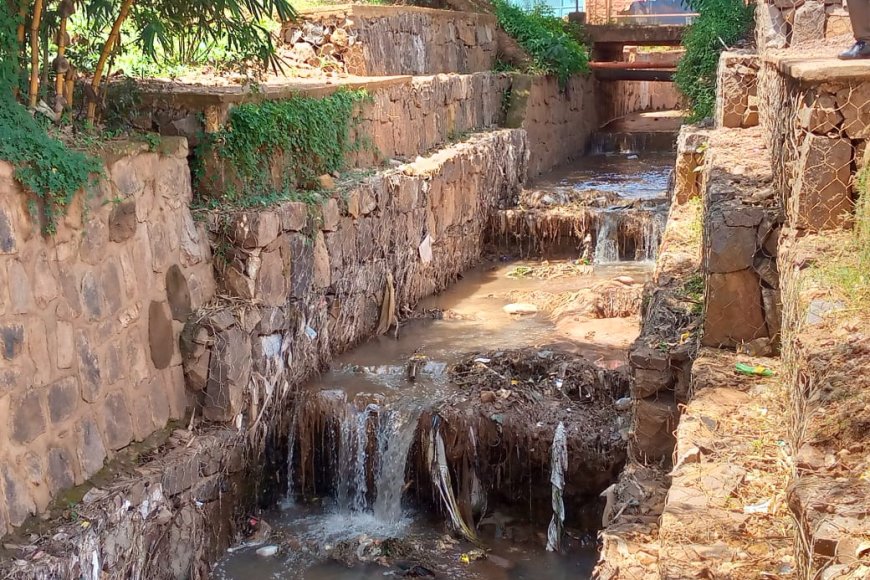
Kigali-Kigarama: Rainwater causes disasters that could generate electricity
Residents of Nangumurimbo Village, Karugira Cell, Kigarama Sector, Kicukiro District, as well as residents further north, are complaining about rainwater coming from the top of Rebero Mountain, which is destroying residents and cutting off streams, where they are concerned that the bridge crossing the stream could collapse and people could be swept away by the rainwater.
This water comes from infrastructure projects that have been built, including schools, residential buildings; wedding halls, and roads, because the forest that used to hold the water was removed and new houses were built.
Due to the development of Rebero Mountain, residents in the middle of the hill towards Kimisange, and residents in the valley in Kigarama Sector and Kimisange, are constantly worried about disasters that water coming from the stream could wash away their loved ones.
This water comes from the top of the mountain, is also added from the sides,and flows down at high speed between the hills, and then flows into the stream.
Nsengiyumva Damascène, a resident of Kigarama Sector for 10 years, expressed concern that residents may face a problem, saying, “There are always concerns when crossing, there are always accidents.”
Emmanuel Simugomwa,a resident who lives next to the bridge in Byimana Village in Kigarama Sector, also said that crossing the bridge is still a problem, saying,“The bridge we built allows people to cross, they come from Byimana, Bwerankori, I am worried that this bridge will take people, out of 12 trees, only 1 is still standing, we are worried that it will kill people.”
Kakuze Veneranda, 55 years, who lives in Indatwa Village, said, “I was born here, the canal was still small, before it was even built.”
He said, “In 1999, we used to cross this canal on foot, and we would go to the other side to greet each other.”
Veneranda said that the canal was caused by buildings and roads, and he always tells those who want to divert water to his house, “You should have told us first.”
He said, “We farm, we also have water, the canal you see is mine, they destroyed it because it was in the middle of nowhere, the canal hits it and it goes away.”
There were bamboo trees that I planted, he said, “I have a family of 15 people,the one who lives there is my son, they told us that they were going to build a canal, the trees I planted are there, they should build a canal, because they did it at Nyiranuma, divert water to Rwampala, and also build a dam.”
A resident named Kwihangana Claver told the media that although the river had already been there since it became severe in 2015; the water from Rebero is what is destroying them.
He said, “They may not be able to handle the water, when it reaches here, there is a bend that causes the water to overflow, overflowing the road, destroying the residents, because during the construction of this river, they did not straighten it properly so that the water could flow.”
Gasana Valentin, a resident of Nangumurimbo Village, Karugira Cell, Kigarama Sector, said that the river has been flowing for five (5) years.
He said, “That’s when the disasters started, because of the river’s confluence, that’s why there are always disasters.”
He continued, “When it rains, it brings trees, sands immediately come down, the river overflows, to the point where even cars are afraid to pass.”
Residents say that a mistake was made in the construction of the canal, they did not extend it properly, but made a bend, causing water to gather in one place, cross the road, causing it to flow into shops on the sides and into residents' houses.
After the consequences of the canal, they say that someone who took the water with a motorbike said, "The water comes from Rebero, in some places it is built and in others it is not built."
Residents are requesting that the bridge where it was placed be moved to a place that is also built with the canal,without first passing through the bend, so that the water can pass through, after 5 years, the water started to come in large quantities, they are requesting that those who built in Rebero collect water, because the water from the canal comes with wooden poles.
Karimba Viateur, one of the residents, said that the water level has increased due to the number of houses, deforestation, and the water no longer seeps into the ground, but instead flows into the river, which is being improved and the bridge is being moved, which is causing the water level to rise.
The large river is caused by water coming from the top of Mount Rebero, which flows down to Kimisange, and flows into the valley, where residents often worry that the rainwater will wash away people and their belongings.
The answer to what to do
Prof Francois Naramabuye, a professor at the University of Rwanda and an environmental expert, says that climate change has changed, and it also has its own causes, coming from near or far, that now there is a land use pattern, that land use pattern, can cause the aforementioned problems, if you are going to build houses on top of a hill, those houses do not spread grass, the rain does not fall on the unpaved ground, all of this causes the rain to accumulate on those sheets, then it falls on the ground that is not soft or compacted.
Next, the water flows with great force, carrying away the land, and can damage the structures that have power below or below, because in the past, there was a forest covered with houses thatched with grass, when it fell to the ground it fell into the grass, moving slowly and not too fast, and it continued to flow into the mountains, but instead it increased the water in the springs,
People should have implemented the measures taken in construction in 2006-2007 when the Government established a land management strategy, we must learn from what is being done elsewhere, and we must base it on our own problems, due to the small land area and the increasing population.
Some measures have been taken and are being revised; there is a government initiative that encourages people to build houses in rows, on small land, with many people living there.
In Rwanda, there is an opportunity because of the strong soil, which can support many multi-story buildings, ranging from 10 to 30 or more. In this case, people use less land for housing, and the way to use water is easier, instead of wasting it, they use it for their own benefit, because water is needed in many known ways,
The source of water is slowly seeping into the ground, when the source is depleted, the sources will inevitably decrease, studies are available, the agencies responsible for land, agriculture and the environment have conducted many studies, the methods are available, and even the technology is available, what is missing is to disseminate it and use it,
Ministry and institutions have prepared it, including REMA, MINAGRI, and it has been studied well, what is missing is testing, and then there is dissemination of this activity in all the appropriate places, one wonders why it has not been done.
The process of capturing water and storing it in a place, giving it a way to continue as a source, water from underground wells, or using it to generate energy, MINAGRI has been preparing for many years, but its implementation should be done by the private sector, and other people who understand it, researchers and universities, who should implement what the government has put in, it is written, then they conduct experiments, and teach people to use it.
Reminders are done, but there are priorities, now you see they have started to sensitize people, the media should disseminate it in collaboration with experts, there are experts who can implement it.
Tbilisi, Georgia, is a city located in Eastern Europe and Western Asia, with a population of 1.259 million in 2024, with an area of 726 km². It is a city with mountains, they have built dams that generate electricity from rain, batteries that store electricity and during the spring, they switch, solar panels, which continue to provide electricity, and the city is lit by the electricity that is in it.
Prof. François Naramabuye, who has been teaching students at the university for 26 years, says that they can also do something, saying, “We taught you, some are trying to work, others are doing well abroad”.
They also say that they should find other ways, because those they taught are there, to be with them, and to help them teach, but rather learn from what has been done elsewhere, someone can follow, and do the same with those who are doing it, then the things they have learned, are put into practice, it requires that people wake up, work together and talk to each other, because there are many things that they must be careful about, because even with land use, there are times when if you continue to use it only to increase production, the materials you use are left in the soil or in the water, saying, "We may have time, we have killed our land". As for things related to fertilizers and chemicals that people use, they must be careful about everything, because in the world this information is available, it is known, there is nothing new in it, saying, "What we do is be careful, then we see how we advise those in charge, we put a lot of effort into it", and increase the number of workers, so that all these tasks can be carried out.
Twahirwa Anthony, Head of the Weather Forecasting and Application Department, at the National Weather Service (Meteo Rwanda), in an interview with the media, said that they have the ability to measure weather forecasts for 5, 7, 1 month, 3 months because it is required by farmers, weather forecasts for the next 30 years and even 100 years.
The above-mentioned institutions work together, early measures are taken, the effects of climate change are prevented, so that water is conserved, does not cause disasters, but is produced for the benefit of the population, including generating electricity to replace the current REG, increasing sources, preventing desertification and flooding that constantly threaten the lives of the population, so that the population is safe from disasters.
Emma Claudine Ntirenganya, the Director of Communication and Education in the City of Kigali, told the media that there is a plan to improve infrastructure, including the sewers, assuring them that the repair work is imminent. She said, “We are doing everything we can to have these sewers repaired, we are doing everything we can to continue to make the City a better place for all of us, starting with all the things that put people’s lives at risk, sewers are among the urgent matters, we would like to ask that while the work is not resumed, they try to protect their lives and those of their families, so that no one’s life is lost near the sewer.
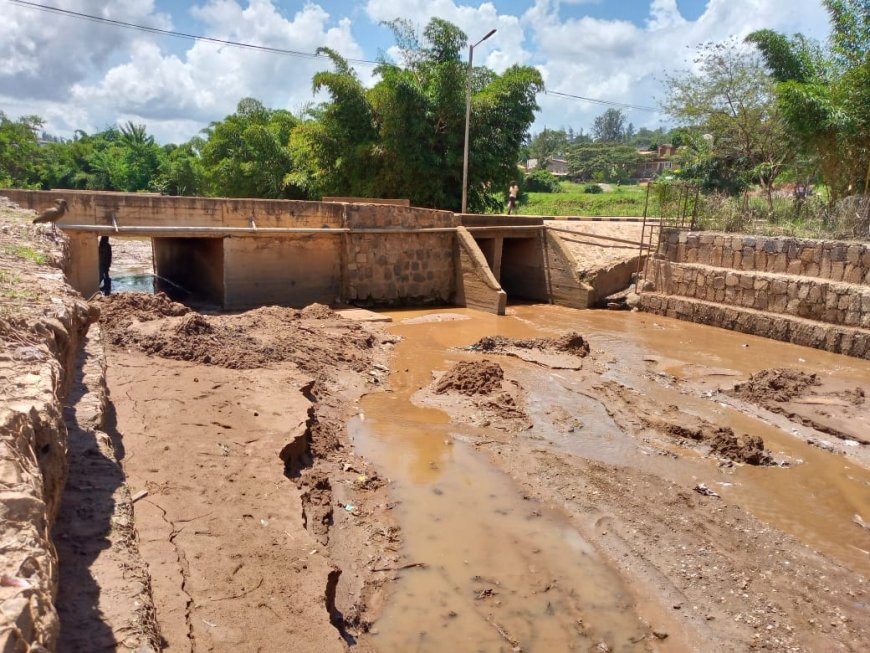

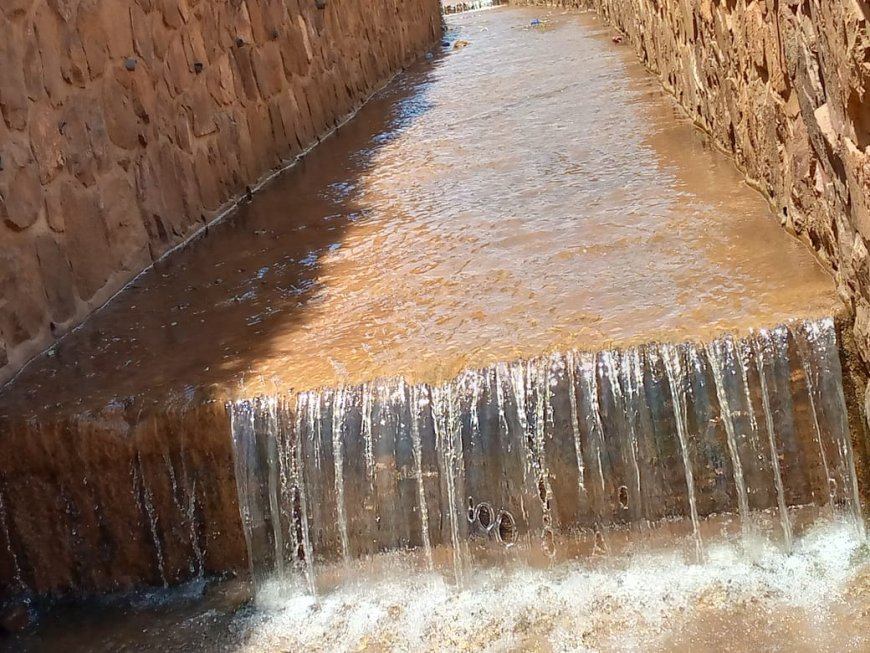
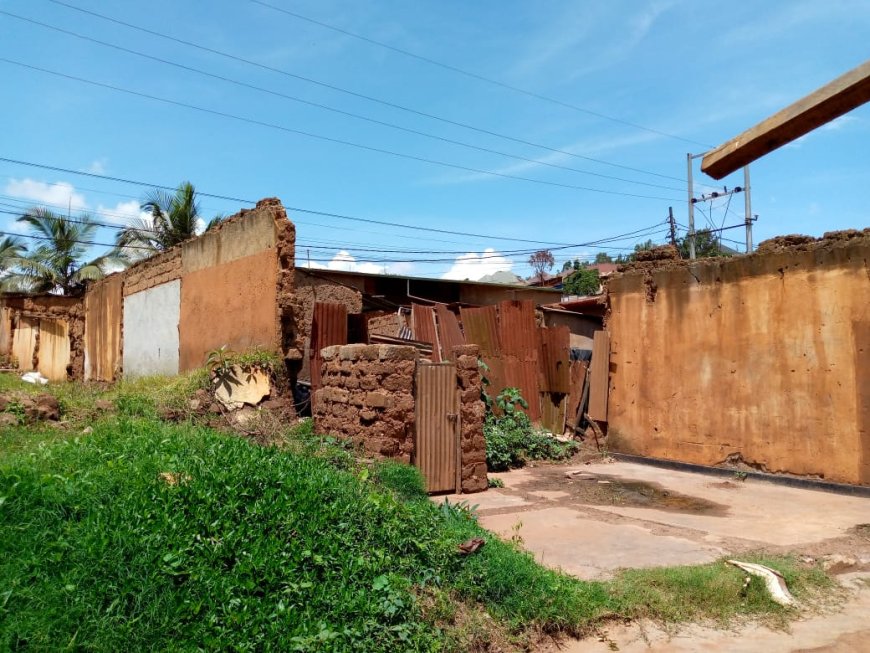
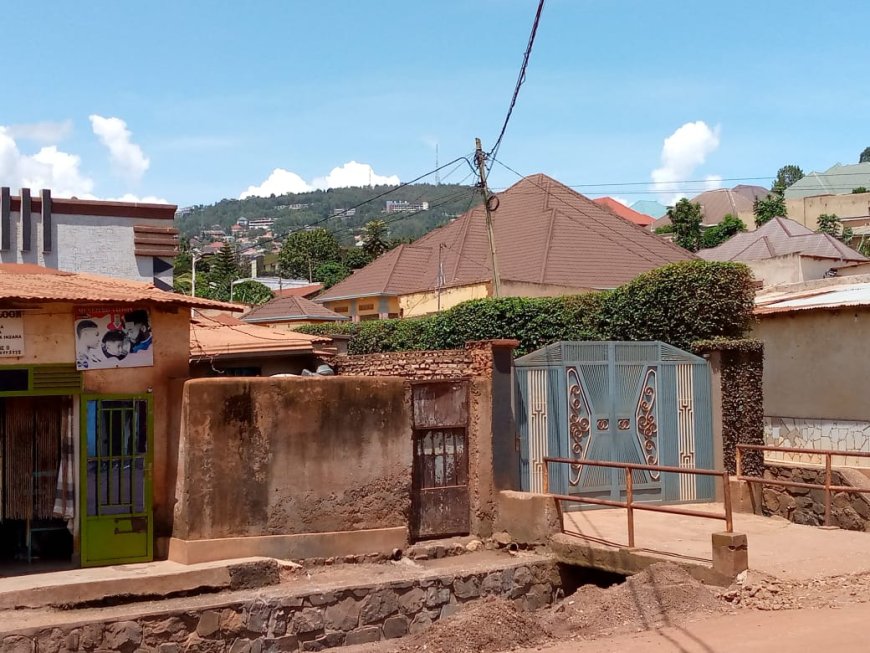
Basanda Ns Oswald




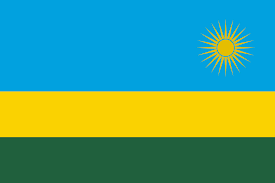 Kinyarwanda
Kinyarwanda
 English
English





































